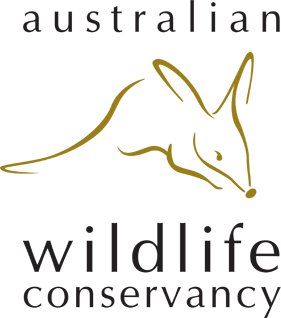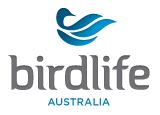Bird Watching Basics
‘birdwatching is a way of transforming an abstract concern for the environment into a personal connection with it’.
Jonathan Franzen
Edmund Selous (1857-1934), was a British ornithologist and the first person credited with coining the term 'Bird Watching', he was a strong proponent of non-destructive bird-study at a time when nature enthusiasts were more likely to collect skins and eggs than take photos or use binoculars. In his book Bird Watching (Selous, 1901) he said:
"Let anyone who has an eye and a brain (but especially the latter), lay down the gun and take up the glasses (binoculars) …. He will soon come to regard the killing of birds as not only brutal, but dreadfully silly, and his gun and cartridges, once so dear, will be to him, hereafter, as the toys of childhood are to the grown man."
Edmund Selous
Why watch birds?
Jonathan Franzen and Edmund Selous are telling us what they get from of birding. So, what do you enjoy about birding?
Is it a way for you to transform an abstract concern for the environment into a personal connection with it, as Jonathan Franzen put it?
Is it the ‘thrill of the hunt’. Shooting birds with a camera is far more sensible than any other type of shooting. Nothing has to die, their beauty is preserved…
Going out into nature searching for treasures, like a treasure hunt… lots of fun…
Birders can be any age, gender, rich or poor…. All sorts of people with the one thing in common, a love of nature.
Getting to know other birders is fun too.
It is an activity that has been very popular in the UK and US for a long time and has millions of followers.
It is definitely growing in popularity in Australia too.
Does that make you twitcher? Ever heard the term? Most birders dislike the term because it usually refers to an extreme form of birding.. chasing rarities!
Nothing wrong with that, but it can imply that such a person may not be genuinely passionate about the everyday birds that really are just as important… and probably just as interesting.
Most birders have a broad interest in nature, not just birds. There are the trees and plants that birds nest in or feed in the invertebrates they eat, the habitats they prefer, the whole complex picture.
But birds are the stars!
They are easier to see, than mammals and reptiles, they are noisier, more colourful, most are active by day, they are good value!!
Technique
Here are a few tips…
Wear clothing that is of a subdued colour…… and move about quietly and calmly, avoiding sudden movements.
All this to gain the confidence of birds that are often gaudy, noisy and flitting hyperactively from branch to branch.
It's good to wear a hat, not only to shade your head but also to protect your head from being poked by branches and reduce glare around your eyes as you look through your binoculars. I think the hat also helps a little bit to break up the 'scary human' profile.
When you are searching out birds in a wooded area, small birds have the advantage of being smaller than the leaves you are trying to spot them among…
Be alert for movement and sound. As soon as you see or hear a bird, move your binoculars to your eyes without taking your eyes off the bird.
1. Listen for calls
2. Look for movement and plumage within the foliage
3. Bring binoculars up and focus... slowly and steadily
Approach birds quietly and slowly. Try to get a reasonable view through your binoculars first, when you have done your best to identify the bird, (it might be your only chance) you may decide to move a few steps closer and refocus, doing this several times may bring you much closer to the bird than you thought you could get.
This progressive stop, then move closer, technique is also a good way to get a better photo. Remember birds are often very busy little creatures and if they fly off before you have a chance to see them properly, it is not necessarily your observation skills at fault. You often have a window of only about 2 seconds to see them before they are gone.
If you find a nest, the temptation is to go right in for a close look. First think about the welfare of the bird and the eggs or chicks. Observe from a distance that does not put the nest at risk by spooking the parents or even alerting predators.
Remember… welfare of the birds is more important than you or I getting that photo or seeing them up close..
be an ethical birder
Identifying birds
This is always going to be a work in progress, a skill that you are constantly improving. Don’t worry that you struggle with some species sometimes, you will be always adding to your knowledge… just by being ‘bird aware’.
As one progresses from just being an outdoorsy, nature aware person to being a birder, the compulsion to identify every call and every flutter of feathers emerges.
How many species do you know already?
Magpie-lark, Willie Wagtail, Black Kite, Whistling Kite, Bar-shouldered Dove, Peaceful Dove, Torresian Imperial-pigeon, Black-necked Stork
You probably know the calls of a lot of common birds and can identify them without even looking. You would be able to describe features of their appearance that tell you at a glance what they are.
Then there are the less common birds and the lbj’s, little brown jobs. For these you will need some help. This moves us to the next subject….
Equipment
Field Guide
A field guide is essential. The easiest guide to get and use is an ap… these are instantly available if you are in mobile range and have a smart phone. They put all the basic information about a bird at your fingertips, including range, various plumages, breeding season and even calls…
Morcombes
Pizzey and Knight
These aps are the electronic version of the book.
A new guide book has been released as of May 2017, the ‘Australian Bird Guide’ it is not available as an ap yet. Hopefully it will come.
Binoculars
Binoculars open up a world of viewing for you. You can effectively see a bird as if you were 8 times closer to it, but the bird still sees you a good distance away, so carries on without fear.
The general recommendation is to get the best you can afford. If they are under $100 probably not worth having, but you can get good ones in the $300 range. Serious birders are happy to pay around $3000 for good binoculars.
If you compare the cost of a good pair of binoculars with the costs incurred in other hobbies (like fishing and boating) birding is cheap. Your binoculars will be as good as new, and hold their value, for a long time. Try before you buy if you can. They need to be comfortable for you to use. Choose a pair in the 7 to 10 magnification range. 32 to 42 are a good size for your objective lens.
Notebook
Carry a notebook and pencil to record your sightings. You can transfer these records to a database on your computer or even record directly to a database in the field on your phone. I use ‘Bird Journal’ some use ‘eBird’.
Camera
Some birders choose not to burden themselves with an expensive camera. For others it is a great way to get into birding. You can buy a compact with a zoom anywhere from 10x to 83x for a reasonable price. These probably will not make National Geographic quality but can enable you to confirm the identity of a species back at home on your computer with your various guide books.
Spotting Scope
A spotting scope is probably essential for shorebird, waders and waterfowl identification and can be very helpful for other long-distance identification, even bush birds at waterholes. Digiscoping is holding a camera or phone up to the scope and taking a photo through it.
Clothing
It is good to dress for the elements. Birding takes you into habitats that expose you to the sun, rain and sometimes biting insects. You are much more comfortable if you are dressed appropriately, both for your comfort and the birds. Be happy to dress down. If you wear red or white you may frighten the birds, and you will upset other birders who might suspect that your flashy white hat is keeping the birds away.
Books
In addition to field guides, books are available that help you find birds, learn about their behaviour and get in depth knowledge on a favorite species.
Taxonomy
Taxonomy is the naming of species. It is the way we determine who is related to who. It is also why finding a bird in the field guide can be a bit tricky.
Until you learn the taxonomic order, you can use the alphabetical index. But you will find it satisfying to know that Rainbow Pittas are the first of the passerines and that finches are the newest birds to appear so they are the last in the book. Emus and ducks are the oldest so they appear first. (Our newest book organizes birds according to habitat…)
Eg. Rainbow Pitta is
Kingdom - Animalia
Phylla - Chordata
Class - Aves
Order - Passeriformes
Family - Pittadae
Genus - Pitta
Species – iris
If all this is a bit much for you there is a candid statement made in the introduction in the book ‘Australian Bird Names’ by Ian Fraser and Jeannie Gray
‘Ultimately names are just a human conceit; they can never be more important or more interesting than the organisms onto which we have foisted them.’
‘Australian Bird Names’ by Ian Fraser and Jeannie Gray
All of this scientific, latin naming and even the recent changes of some common names of birds, tells us something about the bird which may not otherwise have known. So try and embrace it, don’t let it frustrate you…
Conservation
Unfortunately, it seems the only successful efforts to conserve our dwindling wildlife come from monetizing it. The majority of us humans don’t really care that much about saving little animals… unless there is money in it. (Sorry for sounding a little cynical, please show me where I am wrong about this and I’ll gladly adjust my view)
Bird watchers can help! While it is not an expensive past time, we do spend money. Your visit to Kakadu is evidence of that. The money you have brought to the NT economy does not go un-noticed and it definitely helps business and politicians to see that there is a monetary value in ensuring that non-human species are able to survive and thrive.
So thank you for coming to the Top End and spending your money, it helps the birds and the environment!
… hope you are enjoy your visit, and that you continue to spend money visiting more national parks in Australia and anywhere else in the world.




